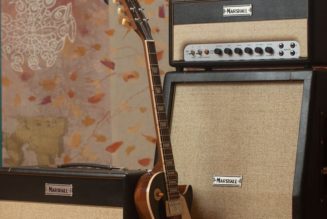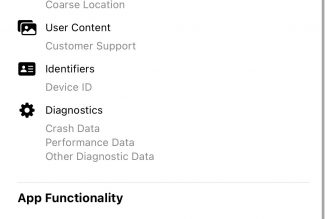HTC is announcing a new wrist-based controller for its Vive Focus 3 virtual reality headset. The wireless Vive Wrist Tracker fits like a watch around a user’s arm, tracking the orientation and position from hand to elbow. It’s designed to complement the business-focused headset’s existing controllers, particularly for simulation and training experiences where body position is important. It’s also part of a larger suite of new features HTC revealed at CES, including a 5G-powered VR experience.
The Wrist Tracker looks a lot like a small, light, and specialized version of the Vive Tracker device HTC debuted in 2017. It includes a strap and a toggle indicating whether the tracker should be on a left or right arm, but unlike the multi-buttoned Vive Focus 3 controllers, it’s designed to basically connect to the headset wirelessly and transmit movement data, without the need for the headset’s cameras to see it. (You can also attach it to inanimate objects.) The VR training company Flaim describes using it to ensure that people were holding a virtual fire extinguisher in the correct position — something you couldn’t necessarily determine with a handheld controller alone — and Taser maker Axon will apparently integrate it into the company’s VR training system.
:no_upscale()/cdn.vox-cdn.com/uploads/chorus_asset/file/23147351/VIVE_Wrist_Tracker_open_4_bg.png)
While HTC didn’t list a price for the tracker, it will launch in the first quarter of 2022. Like the Vive Tracker and the $1,300 Vive Focus 3, it’s not designed for consumers, and it will be most valuable with experiences that are designed specifically to take advantage of it. But it’s also one of the less exotic accessories HTC has developed — a category that includes a sophisticated lip tracking device.
HTC likewise announced the launch of what it’s calling a “portable, private 5G experience” in partnership with Lumen Technologies. It’s an application that’s run on the Vive Focus 3 but offloads most of the actual data processing to a remote computer and streams it through a private 5G system via Lumen. Mobile VR is a long-standing potential use case for 5G networks since experiences can require a lot of computational power delivered with low latency to headsets — although, so far, it hasn’t been transformational in the space.
At CES, the company also announced a charging case and an accessory for charging multiple batteries at a time, aimed at location-based entertainment providers like arcades that want to quickly swap out batteries for multiple headsets. Location-based entertainment providers have used wired HTC headsets for some time, but the Vive Focus 3 promises to be more convenient, particularly after a series of software updates last year.








